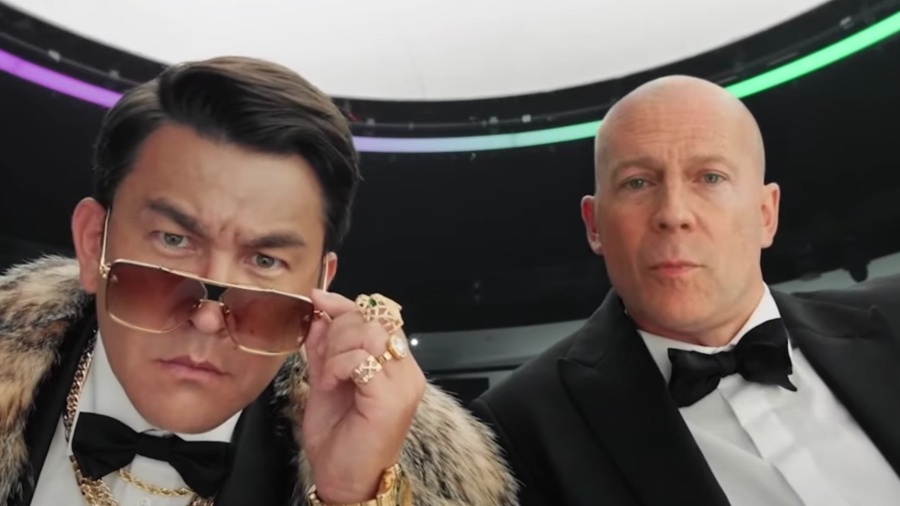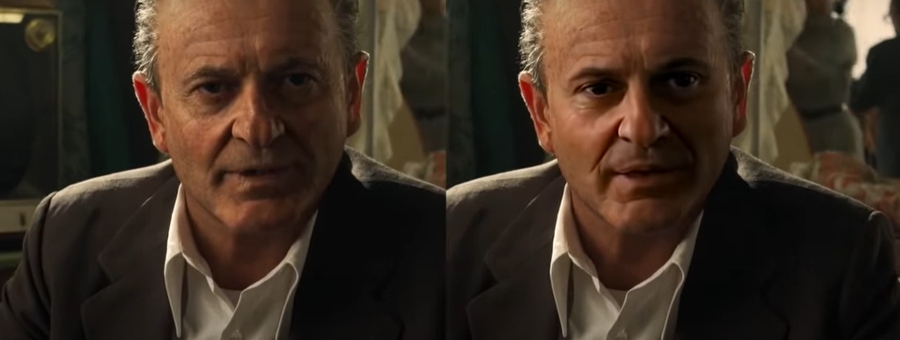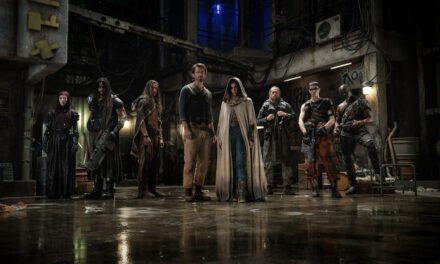UPDATE
Oct 3, 2022
In a statement from Bruce Willis’ representative, the actor has denied any claim that he has sold the rights to his digital likeness for future films and ads, according to The Hollywood Reporter. In a statement shared with THR, the rep. said that Willis “has no partnership or agreement with this Deepcake company.”
Bruce Willis and his new deepfake deal with Deepcake has been covered by a multitude of outlets in a straightforward, journalistic fashion. Deepcake, of course, is indulging in a wealth of free PR right now as a highly visible company that makes digital twins of celebrities in 4K and superimposes them onto another performer’s body.
Let’s cover it like this – first, here are the journalistic-y, objective facts:
- Bruce’s daughter, Rumer, put up an Instagram post on March 30th, 2022 that explained that her dad had recently been diagnosed with aphasia, a condition that affects the cognitive ability to speak, and that Bruce would be stepping away from acting.
- Bruce Willis sanctioned his likeness for a series of 15 ads by the Russian mobile network company Megafon. He made his triumphant deepfake appearances as Die Hard’s John McClane. Megafon pulled from 34,000 units of content to develop a perfect digital replica of Willis.
- It’s September of ‘22 and Bruce sells his likeness to Deepcake to be “hired” for future productions using his digital twin. Deepcake advertises its ability to cross-blend A-list celebrities with a company’s brand and “hyper-personalize” the message through performance marketing opportunities based on deepfake star power.

Now, here are the non-journalistic, totally speculative gossip “facts”:
- The integrity of film and television is going to tornado-spiral into a maelstrom of confused devastation for movie lovers, with viewers unsure of how to interpret seeing, say, a 30-year-old Robert De Niro act as the love interest for Sydney Sweeney in a new deepfake-inspired rom-com, Sydney and Bob. (This is all hypothetical – pretty sure this movie is not in production).
- The deepfake completely takes over and soon your favorite classics will be re-released with alternate digital actors. So, you like Titanic? Here’s the re-release with Harry Styles as Leonardo Dicaprio. Forrest Gump? Here’s Taron Edgerton as Forrest. Tim Robbins in The Shawshank Redemption? NOPE. Sorry, nobody is touching the ‘Shank. The ‘Shank is sacred.
- The next step is you’ll walk into McDonald’s and your server will have a hologram of Michael Keaton superimposed over their face. You will be served fast food by your favorite celebrities. Steve Carell works at Starbucks. Chris Hemsworth is a busboy. Nobody makes it out untouched.
A few years back hologram performances during live shows became a controversial talking point, and the aftermath was that it didn’t really amount to much. Yeah, concerts still feature holograms, but there’s been no diminishing of a fan’s hunger to see the real thing. Will deepfake technology carry the same arc? Here’s a few points from both sides:
Pros:
- Actors (like Bruce Willis) with a life-altering condition (like aphasia) can maintain some level of control over their legacy and career.
- Those in the VFX world can entertain the option of integrating a performance digitally to their liking if they have conflicts with access to the physical performer. They also can superimpose an actor’s face over anybody in the editing process with the goal of tweaking mannerisms and delivery to enhance the performance.
- Movies like The Irishman have the ability to play with de-aging techniques and interweave multiple timelines with the same actors. Obviously, this has had mixed reception so far.

Cons:
- As No Film School previously wrote about, there’s already been an issue of women’s faces being used in deepfake revenge porn.
- The integrity of an actor’s legacy may be compromised negatively, and with justified reason, if they are no longer actually performing for themselves.
- The ease of using deepfake tech could allow bad actors to superimpose the face of an authority figure to spread propaganda/disinformation.
It’s a lot to reflect on, and from the standpoint of someone in VFX or editing, the question likely won’t be, “how can I use this technology?” but a much more sincere question attached to personal artistic integrity:
“Is this the natural progression of VFX to work with a performance developed through a celebrity avatar, or has this form of expression ventured into a realm of inauthenticity?”





